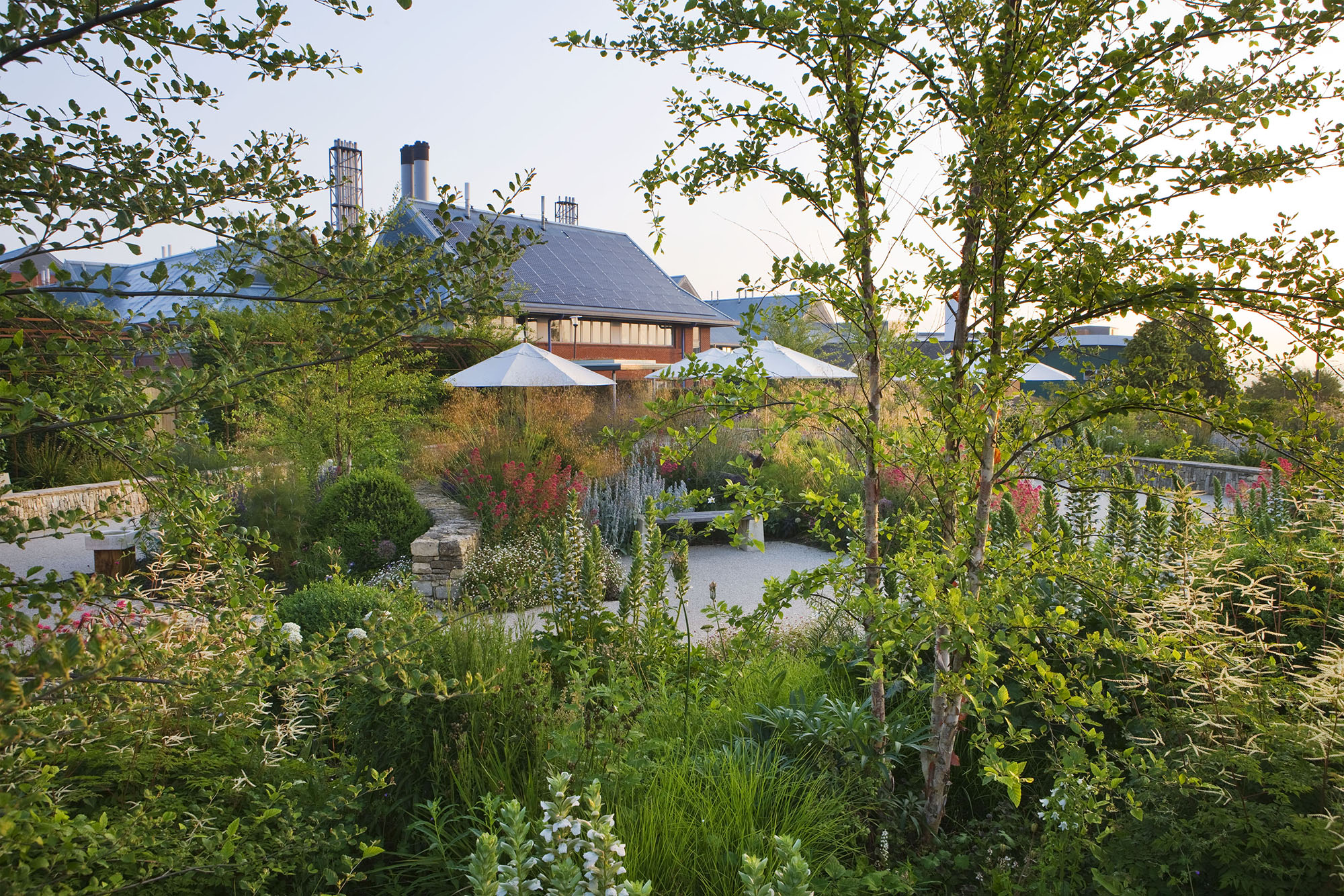Horatio's Garden: The life-changing gardens that 'give you hope and take away the darkness'
George Plumptre visits the extraordinary Horatio’s Garden in Salisbury, an 'inspirational place' that shows the power of gardening.

Visiting a friend in hospital recently, I came across what passed for a garden. It was a sad affair, with more concrete than plants and, squeezed between the hospital wings, it had little light and no view. For a patient, it would not give peace or comfort, rather, the opposite — it was likely to lower their spirits. Quite different from Horatio’s Garden, next to the spinal-injuries unit at Salisbury District Hospital in Wiltshire, which was opened in 2012. From what had been the hospital car park, patients can now look across a swathe of perennial grasses and sanguisorba lined with an apple walk, to a view of distant chalk downland. As one patient said: ‘It’s such an inspirational place, it gives you hope and takes away the darkness of being in a clinical environment.’
The garden’s designer, Cleve West, showed how to overcome a challenging, non-horticultural brief. It had to have seamless access from the next-door ward for both wheelchairs and hospital beds and paths that were level and smooth-surfaced. These provide the garden’s skeleton, together with low limestone walls in the shape of a human spine, which double as seating. There is a garden room for year-round socialising, as well as a glasshouse and a horticultural therapy area, where patients can actively garden at wheelchair height.
Ten years after Salisbury, the latest Horatio’s Garden, created by the Welsh designer Sarah Price, opened in 2022 in Wales at the University Hospital Llandough, Cardiff. Although it is true to the same brief, it is full of subtle differences and individual features. She wanted to incorporate a sense of the varied Welsh landscape, so the trademark immaculate paths sweep around beds containing meadow, scented, vegetable and flower gardens. The shrubs and small trees are kept clear-stemmed, with canopies of foliage to allow for views through the garden and the various beds contain a succession of perennials through the seasons. A beautifully designed pavilion and glasshouse allow for gatherings and gardening throughout the year.
It is sobering that these gardens are part of a group that was born out of a shocking tragedy. In 2011, a 17-year-old schoolboy, Horatio Chapple, was killed by a polar bear when on an expedition in Norway. Horatio’s father, David, is consultant spinal surgeon at Salisbury District Hospital, where Horatio had volunteered only weeks before the expedition. He had discovered that what patients longed for was access to a garden; after his death, his parents, David and Olivia (a GP), decided that a garden at the Salisbury unit would be a fitting legacy for their son and set about making it happen.
The Salisbury project showed Mr and Mrs Chapple the benefits of a garden for patients. They knew it was one of only 11 spinal-injuries units in UK hospitals, so they embarked on a programme of engaging with the relevant hospitals to get permission to build a garden outside its specialist unit, raising the necessary funds, and choosing a different designer for each one. There are now gardens at six: Salisbury, Glasgow, Stoke Mandeville, Oswestry, London and Cardiff. Work has started in Belfast, to be followed by Sheffield, Hartlepool, Wakefield and Southport.
The gardens are all fascinatingly different and yet there is a common thread running through. Partly, it is the sheer quality of design and craftsmanship and individuality of planting, but it is also a common inspiration of working for such a worthwhile audience as suggested by Tom Stuart-Smith, who designed the London garden. ‘Here is something that offers people hope, change and growth and has the capacity to change their lives when they are most in need.’
As I know from experience, in the past, gardens in hospitals have been pretty desultory affairs. Horatio’s Garden has shown what is possible. From a small family charity, it has become an organisation of national significance. Its achievement is elegantly summed up by Horatio’s mother, now the charity’s chair: ‘Horatio’s Garden is changing perspectives about hospital gardens. We are showing the realms of possibility for great garden design within clinical environments and the impact this has on the health of patients, families and staff.’
Exquisite houses, the beauty of Nature, and how to get the most from your life, straight to your inbox.
George Plumptre is chief executive of the National Garden Scheme, which is the largest supporter of Horatio’s Garden (www.ngs.org.uk; www.horatiosgarden.org.uk)

My Favourite Painting: George Plumptre
The chief executive of the NGS — and a regular contributor to Country Life — chooses a family portrait which hangs